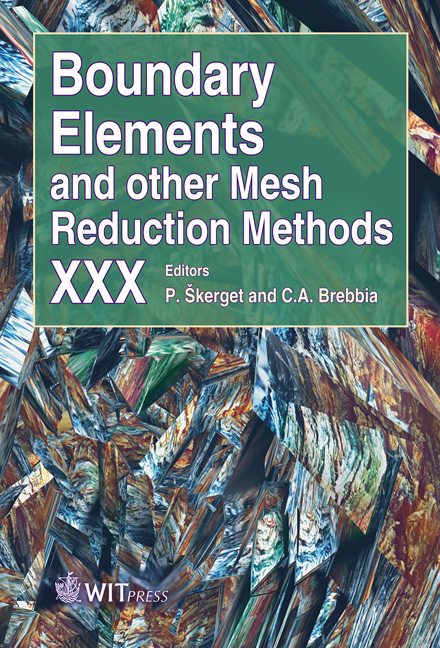Parametric Analysis Of ACA-based Solver For BEM 3D
Price
Free (open access)
Transaction
Volume
47
Pages
10
Published
2008
Size
406 kb
Paper DOI
10.2495/BE080251
Copyright
WIT Press
Author(s)
T. Grytsenko & A. Peratta
Abstract
Parametric analysis of ACA-based solver for BEM 3D T. Grytsenko & A. Peratta Wessex Institute of Technology, UK Abstract The standard Boundary Element Method (BEM) with single domain yields the dense linear system of equation (LSE). This LSE cannot be solved efficiently by existing iterative solvers such as CG, GMRES, TFQMR, etc. Moreover, such LSE cannot be stored in advanced formats such as Compressed Sparse Row or Modified Sparse Row and therefore cannot be compressed in order to economise memory consumption. Methods such as the fast multipole method and panel clustering gain their efficiency from approximating the kernel function. This paper implements and studies the parameters and performance of the Adaptive Cross Approximation (ACA) algorithm for reducing the rank of off-diagonal blocks in the three dimensional BEM. The ACA algorithm is purely algebraic and does not need to deal with the kernel. The algorithm uses a hierarchical matrix storage approach where the matrix is split into many blocks. The off-diagonal blocks of this matrix represent remote interactions between source points and are therefore approximated by low-rank matrices with the ACA approach. Those blocks, which describe close interactions between source points, are stored without any changes. These reorganisations in conjunction with novel algorithms for manipulation with H-matrices reduce the calculation complexity of matrix-vector multiplication (MVM) to approximately ) (N O . This simplification of MVM paves the road for speeding up of the solution of LSE coming from BEM, as MVM is a key-operation for many existing solvers. This paper analyses the ACA-based solver and describes how to choose parameters for this solver when used in conjunction with BEM. Finally, a 3D numerical example solved with this technique is presented. Keywords: BEM 3D, hierarchical matrix, adaptive cross approximation, iterative solver.
Keywords
BEM 3D, hierarchical matrix, adaptive cross approximation, iterative solver.





